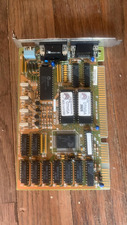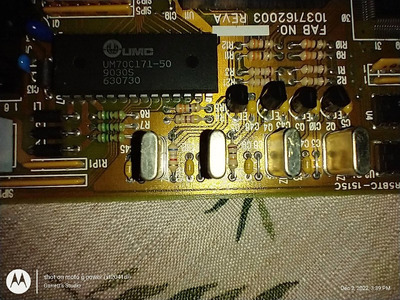thegenerallee86 wrote on 2022-12-02, 21:04:
I do have an oscilloscope and also checked the Video card and noticed near the oscillators that one of the resistors near the last one closest to the Dip switches is low at 6k and the rest are all at 10k.
The resistor value is unlikely to be an issue. Generally, this resistor is used for DC biasing of the oscillator circuit, and the higher the frequency of the oscillation, the lower resistor value is chosen in an otherwise similar circuit. The ultra-low-power 32kHz oscillators for the real-time clock and wrist-watches often use 1MOhm or even higher at that point. My guess is that the 6k resistor is next to a 36MHz crystal used for 800x600, and 10k is located next to the other three crystals, likely 16.257 or 16.000 for EGA, and 25.175 MHz as well as 28.322 MHz for VGA modes. CGA modes at CGA timing are likely generated by dividing the 28.322 frequency by two inside the OAK chip, so you get 14.161. A proper CGA used a pixel clock of 14.318, which is close enough. If your card doesn't have a 16.257 MHz (or 16.000 MHz) oscillator, it wouldn't be surprising that the EGA timings are off.

